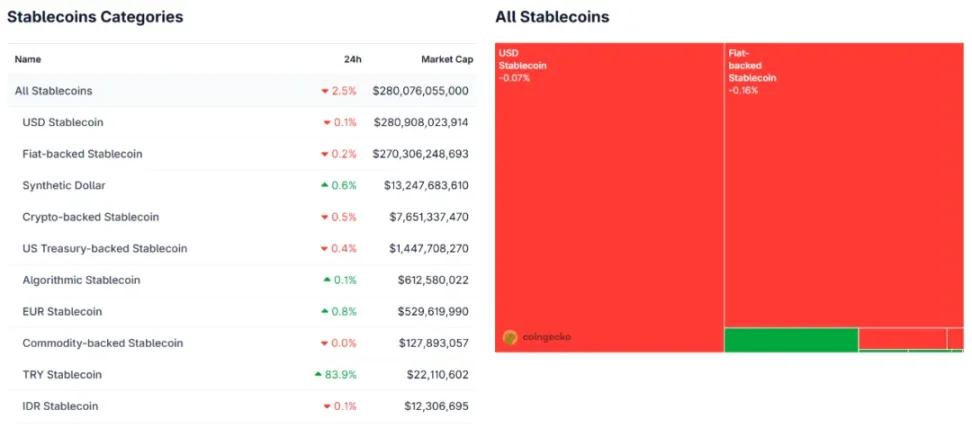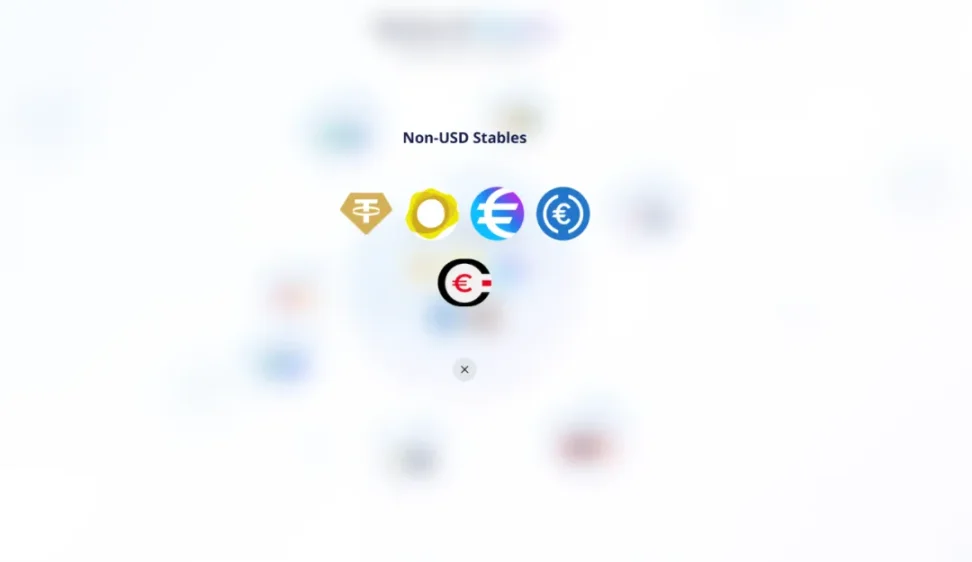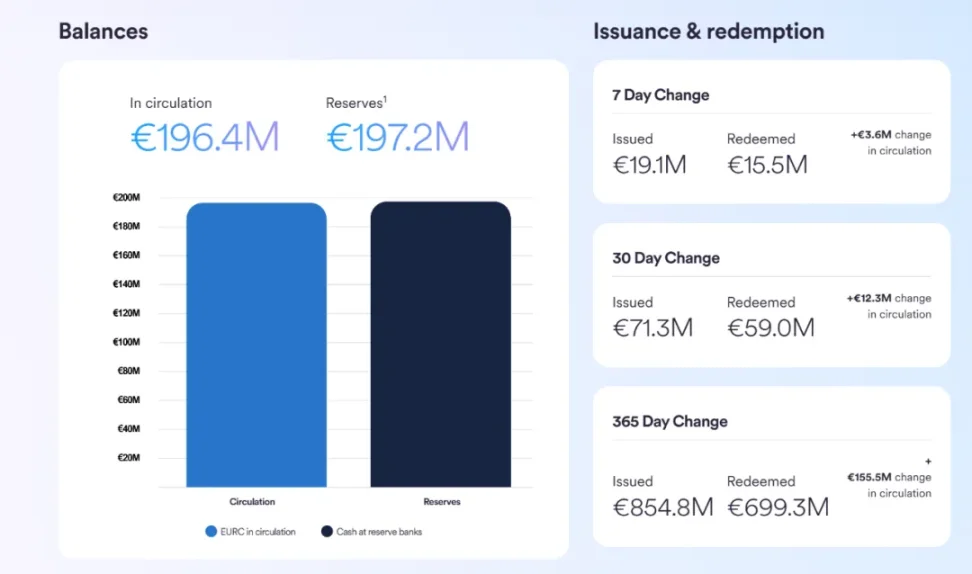Author: Bluru Says
If someone asks you if you have ever used a stablecoin,
the first thing that likely comes to mind is USDT or USDC—these stablecoins pegged to the US dollar have almost become synonymous with "stablecoin."
But what if the person is referring to euro stablecoins, gold stablecoins, or even the recently rumored renminbi stablecoin? This actually reveals the true state of the current stablecoin market: while the US dollar dominates, the world of stablecoins is far more diverse than one might think.
They do not attempt to challenge the dollar's status but rather serve differentiated needs—some people want to use euro stablecoins to avoid exchange rate fluctuations, others prefer gold stablecoins as a safe-haven asset, and some look forward to the renminbi stablecoin becoming a bridge for cross-border payments.
In other words, stablecoins are transitioning from a singular narrative centered around the US dollar to a more complex global narrative of diversity.
Why Pay Attention to Non-Dollar Stablecoins?
If stablecoins are the "blood" of the crypto world, then dollar stablecoins are the most core blood type within this system. Over the past five years, USDT and USDC have consistently held the top two spots in the market, almost monopolizing trading, clearing, and payment processes.
According to CoinGecko data, the combined market capitalization of the two accounts for over 90% of the total stablecoin market, a position that even exceeds the actual share of the US dollar in the global trade system, establishing an undisputed dominance.

Source: CoinGecko
However, the demand for stablecoins goes far beyond "dollarization."
In Europe, daily payments, savings, and accounting systems are denominated in euros, and users holding dollar stablecoins often have to bear the risk of exchange rate fluctuations; in the Middle East or Southeast Asia markets, while the dollar remains the dominant currency for international settlements, local residents also have a need to anchor their funds in local currencies or other safe-haven assets; on a macro level, trends such as de-dollarization, regional currency alliances, and the financialization of energy and resources further amplify the exploration of "non-dollar pegged" stablecoins.
In other words, our discussion of non-dollar stablecoins today is not because there is a problem with dollar stablecoins, but because the demands of the real world and crypto finance are diversifying, and these differentiated needs form the market foundation for non-dollar stablecoins.
Based on the market practice that "stablecoins are no longer a tool that can be summarized by a single narrative; their use varies from person to person and according to need," imToken has also categorized stablecoins into several exploratory subsets (see further reading: "Stablecoin Worldview: How to Build a Classification Framework for Stablecoins from the User Perspective?").
According to imToken's classification method, the existing practices of non-dollar stablecoins (considering actual issuance and circulation) mainly include euro stablecoins and gold stablecoins.

Source: Non-dollar stablecoins from imToken Web (web.token.im)
Main Types of Non-Dollar Stablecoins
In the landscape of non-dollar stablecoins, the most practically significant representative is the euro stablecoin.
Currently, the more mainstream products in the market are EURC launched by Circle and EURS by Stasis, both pegged 1:1 to the euro and backed by reserves from regulated financial institutions. The target audience for these stablecoins is not global crypto trading users but rather local users in Europe.
For example, if a German investor uses USDT as a trading medium, every time they convert from fiat to a dollar stablecoin, they have to bear the exchange rate risk between the euro and the dollar. However, if they use a euro stablecoin directly, they can complete transactions and settlements on-chain, completely avoiding exchange rate losses.
With the gradual implementation of regulatory frameworks like the EU's MiCA, the compliance and application scenarios for euro stablecoins are becoming clearer. This means that in the future, euro stablecoins are expected to become the local mainstream currency mapping for crypto finance in Europe. Although their market capitalization is still far smaller than that of dollar stablecoins, their growth curve is clearly driven by policy dividends, indicating potential for long-term penetration.

Source: Circle
In contrast to the local settlement convenience logic of euro stablecoins, another representative type of non-dollar stablecoin is the gold stablecoin.
Gold has historically been the "value anchor" of the global financial system. Even though the dollar has been decoupled from the gold standard for over half a century, central banks around the world still regard gold as a core foreign exchange reserve. In the crypto space, this traditional safe-haven asset has also been tokenized, with typical representatives being PAX Gold (PAXG) and Tether Gold (XAU₮).
Their mechanism is relatively straightforward: each token corresponds to one ounce of physical gold, held in custody by institutions (such as vaults in London or Switzerland). Users can freely transfer these tokens between wallets like they would with USDT, participate in lending or yield farming in DeFi protocols using them as collateral, or redeem them for physical gold. This way, the traditional safe-haven attributes of gold are combined with the high liquidity of blockchain.
Therefore, compared to physical gold bars or gold ETFs, the biggest innovation of gold stablecoins lies in their "divisibility and liquidity." Traditional gold is often measured in grams or ounces, making small-scale division difficult; while gold ETFs are convenient for trading, they rely on financial market clearing. Gold stablecoins break through these limitations—they can represent real hard assets while being quickly transferred and divided on-chain in token form, significantly lowering the transaction threshold.
Of course, they are not without flaws. The price of gold itself can be affected by fluctuations in the global economy, interest rate environment, and geopolitical risks, so gold stablecoins do not possess the near-absolute price stability of dollar stablecoins. However, for those looking to seek diversified value storage on-chain, they provide a configuration option closer to hard assets.
Overall, euro stablecoins and gold stablecoins represent two distinctly different logics of non-dollar stablecoins: the former emphasizes local convenience and compliant development of regional currencies, while the latter emphasizes the digitization and liquidity enhancement of traditional safe-haven assets. Together, they drive the narrative of stablecoins from a singular "dollar hegemony" to a diversified global currency ecosystem.
What Lies Ahead for Non-Dollar Stablecoins?
From a macro perspective, the rise of non-dollar stablecoins will not weaken the dominant position of dollar stablecoins in the short term. After all, whether for global settlement in crypto trading or liquidity support for cross-border clearing, the dollar's status is deeply entrenched.
However, this does not mean that non-dollar stablecoins are without significance; they are more like a supplement and expansion to the existing landscape, exploring new options for diversified currency anchoring outside the dollar-dominated financial order.
Taking euro stablecoins as an example, their value lies in reducing exchange rate friction for European users. With the implementation of regulatory policies like MiCA, they are expected to become a cornerstone of regional digital finance. Meanwhile, gold stablecoins combine traditional safe-haven assets with blockchain liquidity, providing investors with a new tool that balances value storage and flexibility.
Additionally, recent news about renminbi stablecoins gradually entering the crypto context suggests that, although they have not yet formed large-scale circulation, they possess dual driving forces of policy promotion and actual demand in cross-border settlements and regional trade settlements. Once combined with compliant on-chain financial infrastructure, renminbi stablecoins could very well become an important bargaining chip in the topic of "de-dollarization."
However, non-dollar stablecoins also face limitations:
First is insufficient liquidity. Compared to the hundreds of billions in market capitalization of USDT and USDC, non-dollar stablecoins generally have limited market caps, leading to insufficient depth and acceptance in the secondary market.
Second, their application scenarios are singular. Euro stablecoins are more confined to Europe, gold stablecoins lean towards value storage, and renminbi stablecoins are constrained by policy windows and compliance environments. This means they are unlikely to become globally accepted currencies like dollar stablecoins.
But from a long-term perspective, the story of stablecoins is gradually moving towards "multipolarization." Dollar stablecoins will remain the backbone of crypto finance, while euro, renminbi, gold, and other pegged assets will fill market demands in their respective dimensions.
They may not replace the dollar, but they are continuously broadening the boundaries of stablecoins, reshaping the structure and layers of the entire ecosystem—the future of stablecoins may not be the victory of a single currency, but rather a coexistence and mutual supplementation of multiple pegged assets.
Dollar stablecoins are the starting point, but they are by no means the endpoint.
免责声明:本文章仅代表作者个人观点,不代表本平台的立场和观点。本文章仅供信息分享,不构成对任何人的任何投资建议。用户与作者之间的任何争议,与本平台无关。如网页中刊载的文章或图片涉及侵权,请提供相关的权利证明和身份证明发送邮件到support@aicoin.com,本平台相关工作人员将会进行核查。




